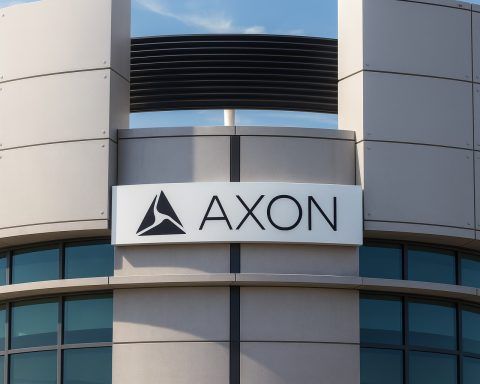- Stock Price (TSX & NYSE): Aurora Cannabis trades around C$6.85 per share on the Toronto Stock Exchange (TSX), roughly US$5.00 on the NYSE as of Nov 4, 2025 [1] [2]. This values the company at about C$390 million (~US$280M) in market capitalization. The stock is up 10–20% year-to-date in 2025, outperforming the cannabis industry’s modest ~5% rise [3], though it remains about 24% lower than a year ago [4].
- Recent Rally on Regulatory Hopes: Aurora’s share price and cannabis peers surged in late September after former U.S. President Donald Trump publicly endorsed CBD for senior healthcare and hinted at rescheduling marijuana at the federal level [5] [6]. Aurora’s stock jumped over 25% in a single day on that news [7]. This reflects how sensitive the sector is to regulatory developments, as U.S. rescheduling could ease taxes and enable U.S. exchange listings for cannabis firms [8].
- Medical Cannabis Focus: Aurora has strategically pivoted toward the higher-margin medical cannabis segment. In the latest quarter (fiscal Q1 2026), medical cannabis sales jumped 37% year-over-year to nearly C$65 million, making up about two-thirds of Aurora’s revenue [9] [10]. This focus drove a 17% YoY increase in total revenue to C$98 million [11] and boosted adjusted gross margins on medical products to ~69% [12]. Aurora’s adjusted EBITDA turned positive (~C$11M in Q1, up 209% YoY) and it generated free cash flow over C$9M [13] – signaling improving fundamentals as the company emphasizes medical markets.
- Latest Financials & Outlook: Aurora is set to report fiscal Q2 2026 earnings on Nov 5, 2025. Analysts expect revenue around C$63 million and a net loss per share of roughly -$0.07 [14] [15]. The company delivered better-than-expected results in Q1, including positive net income on record medical sales. Looking ahead, consensus forecasts project Aurora could achieve positive earnings in 2026, with full-year EPS estimates recently revised up to about $0.96 [16]. The average 12-month price target for ACB is roughly C$8.50–C$9.00, implying ~30% upside from current levels [17], although analyst opinions are mixed.
- Competitive Landscape: Aurora faces intense competition from both domestic rivals and international players. Tilray Brands (TLRY), another Canadian giant, has diversified into cannabis beverages and reported US$209.5 million in quarterly revenue in its latest report [18] – more than triple Aurora’s – though Tilray’s stock trades near US$1–2 after steep declines. Canopy Growth (WEED) has struggled, losing nearly half its value in 2025 amid restructuring [19], and is focusing on U.S. market entry via its Canopy USA strategy. All players are coping with Canada’s oversupplied recreational market and price compression. Aurora’s edge has been its global medical focus and improving cost structure, but sustaining an advantage will be challenging as peers pursue similar international and high-margin segments [20].
- Regulatory Environment: Cannabis regulation is at an inflection point globally. In Canada, recreational use has been legal since 2018, but market growth has been hindered by oversupply and heavy regulation, pressuring prices. Aurora has responded by de-emphasizing low-margin Canadian recreational sales (which fell 20% in a recent quarter) to concentrate on medical exports [21] [22]. Internationally, Europe is a key focus: for example, Aurora is upgrading its EU-GMP facility in Germany to boost production for the growing German medical market [23]. Germany – Europe’s largest economy – is moving toward legalizing adult-use cannabis via pilot programs, a development that could benefit Aurora’s established presence there. In the U.S., cannabis remains federally illegal (Schedule I), but a pending rescheduling to Schedule III (recommended by U.S. health agencies) could be a game-changer. Rescheduling would remove punitive tax barriers (280E) and potentially allow U.S. exchange listings and institutional investment in cannabis companies [24]. However, Aurora’s direct benefit from U.S. reform is limited in the short term – the company has no U.S. operations currently, focusing instead on Canada and international medical markets [25].
Latest News and Catalysts (Nov 2025)
Cannabis plants under cultivation. Regulatory shifts – like potential U.S. rescheduling and Germany’s cannabis reform – have sparked renewed investor interest in cannabis stocks in late 2025.
In the first days of November 2025, investor attention is centered on Aurora’s upcoming earnings release (Nov 5) and broader industry news. Aurora announced it will hold a Q2 earnings call on Nov 5 with CEO Miguel Martin and CFO Simona King to discuss results and outlook [26] [27]. This follows a wave of optimism in October after high-profile political support for cannabis.
Notably, on Sept 29, 2025, former U.S. President Donald Trump shared a video praising cannabidiol (CBD) as a “revolutionary” healthcare aid for seniors and suggested his administration is “looking at” reclassifying marijuana [28] [29]. The surprise endorsement triggered a sector-wide rally. Aurora’s U.S.-listed shares spiked 25%+ in one day [30], and peers like Tilray (+42%) and Canopy (+18%) also saw huge gains as investors bet on easier regulations ahead [31]. Trump’s comments built on momentum from the Biden administration’s moves – in late August 2025 the U.S. Department of Health and Human Services formally recommended downgrading cannabis to Schedule III (moderate control) from Schedule I. This rescheduling, if enacted by the DEA, wouldn’t legalize marijuana but would reduce burdens on companies. “This doesn’t mean it’s legalizing the drug, but it does reduce some of the burden on the companies,” noted one market analyst, explaining that lower scheduling could eliminate the punitive 280E tax rule and enable cannabis firms to attract institutional capital [32] [33].
The prospect of U.S. federal reform – combined with ongoing state-level legalization efforts – has injected new short-term catalysts into cannabis stocks. In Canada, where Aurora primarily operates, there haven’t been similarly dramatic regulatory changes recently. The Canadian market remains stable but saturated; companies are looking abroad or to higher-value products for growth. Aurora, for instance, has been actively expanding its international footprint. In mid-September, it announced a multi-year investment to upgrade its production facility in Leuna, Germany – one of only three licensed cannabis cultivation sites in Germany [34]. The enhancements (new grow rooms, advanced drying techniques, etc.) aim to boost output and quality, aligning with Aurora’s strategy to supply the growing medical cannabis demand in Europe [35] [36]. Similarly, Aurora launched an educational platform for medical cannabis doctors in Europe (initially Germany) and beyond [37] [38], and debuted its premium Whistler Cannabis brand in the Australian medical market [39] [40]. These developments, though lower-profile than U.S. news, demonstrate Aurora’s focus on being a global medical cannabis leader.
Investors should watch for Aurora’s Q2 FY2026 earnings report for updates on how these initiatives translate into numbers. Any guidance on sustained profitability or revenue growth could be a catalyst. Additionally, regulatory news remains a wild card – for example, if the U.S. DEA were to act on rescheduling in the coming weeks, or if Germany accelerates its adult-use cannabis pilot program, it could materially impact sentiment and Aurora’s strategic plans.
Market Position and Strategic Developments
Aurora Cannabis has deliberately repositioned itself over the past two years to emphasize medical cannabis and international markets. This shift comes after a difficult period for the Canadian cannabis industry, marked by overcapacity, heavy competition, and falling prices in the recreational (adult-use) sector. Aurora responded by scaling back less profitable operations – it closed or sold off some large cultivation facilities in Canada and trimmed its workforce – while doubling down on medical cannabis where it sees higher margins and steadier demand (e.g. from patients and insurers).
This strategy is clearly reflected in Aurora’s recent financial results. In fiscal Q1 2026 (quarter ended June 30, 2025), the company’s total net revenue rose 17% year-over-year to C$98 million [41]. Crucially, nearly two-thirds of that revenue came from medical cannabis products [42]. Medical cannabis sales were about C$65 million, up 37% from the prior year’s quarter [43], driven by both Canadian medical patients (helped by insurance coverage uptake) and international sales in markets like Germany, Australia, Poland, and the UK [44] [45]. By contrast, Aurora’s Canadian consumer (recreational) cannabis revenue has been declining, and in recent quarters the rec segment contributed well under 25% of total revenue [46] [47]. As management noted, intense price compression and competition in low-margin recreational products make it tough to turn a profit there [48]. Aurora has thus pivoted to allocate its resources and shelf space toward premium medical offerings and higher-margin derivative products, while maintaining only a focused presence in adult-use for select high-quality or premium brands.
Aurora’s CEO Miguel Martin – who took the helm in 2020 and has since also assumed the title of Executive Chairman – has repeatedly emphasized that “medical cannabis is Aurora’s core strength” and a key differentiator. “Our industry leadership in global medical cannabis… continues to set us apart from our peers,” Martin said in early 2025 [49] when Aurora announced record-breaking quarterly results. He highlighted that the company hit all-time highs in global medical revenue, net income, and free cash flow in fiscal Q3 2025 [50]. Aurora achieved 75%+ of its revenue from medical sales by that quarter, including rapidly growing international revenues (which doubled year-over-year, reaching 60% of medical sales) [51]. The CEO also noted Aurora’s progress in plant propagation (selling young plants to other growers) as a profitable side business, with that segment growing 22% as of Q3 2025 [52]. These efforts contributed to a record adjusted EBITDA of C$23 million in that quarter and a turn to positive free cash flow [53] [54] – milestones that many cannabis companies have struggled to achieve.
Aurora’s financial discipline and cash position are also part of its strategic positioning. The company has approximately C$180+ million in cash on hand [55] and notably eliminated virtually all debt on its cannabis operations [56] (aside from a small non-recourse loan tied to a separate business unit [57]). This is significant because several competitors, such as Canopy Growth and Tilray, carry substantial debt or high interest expenses. Aurora’s leaner balance sheet gives it more runway to invest in growth markets without the overhang of looming debt maturities. For example, the recent investment to upgrade its German facility, as well as launches in new geographies (like Australia and Poland), are funded internally. Aurora is effectively positioning itself as a “pure-play” global medical cannabis supplier, aiming to be the partner of choice for pharmacies, hospitals, and healthcare systems as medical cannabis adoption expands worldwide.
Another strategic pillar for Aurora is innovation and product quality. The company operates several EU-GMP certified facilities – a gold standard required to export medicinal cannabis to Europe. In July 2025, Aurora’s distribution center in Ontario earned EU-GMP certification, becoming its fourth site meeting these stringent standards [58] [59]. This enables efficient export of products to Europe and other regulated markets. Aurora has also cultivated a library of high-potency and unique cannabis strains (including proprietary genetics via its acquisition of Whistler Cannabis, a boutique grower). It continues to roll out new offerings, like IndiMed Tempo 22 in Australia (a 22% THC medical strain) [60] [61], to cater to diverse patient needs. These moves support Aurora’s branding as a premium, reliable source of medical-grade cannabis – an important reputation as doctors and patients seek consistent, effective products.
In summary, Aurora’s market positioning can be characterized by focus and finesse: focusing on the profitable niches (medical, international) and executing with operational finesse (cost cuts, quality standards). This strategy has started to yield tangible improvements in profitability metrics. The big question is whether Aurora can maintain growth in its chosen niches as competition heats up and whether that will ultimately translate into net profits and shareholder returns. The next sections will delve into how Aurora stacks up against competitors and what analysts foresee for its performance.
Cannabis Industry Outlook & Regulatory Environment
The broader cannabis industry in Canada is mature but currently stagnant, whereas global markets are on the cusp of potentially transformative changes. In Canada, five years post-legalization, demand growth has failed to keep pace with the wave of licensed producers, resulting in oversupply and falling wholesale prices. Many Canadian cannabis companies have struggled with persistent losses, leading to facility closures and consolidation. Aurora itself went through a painful period of write-downs in 2019–2021 due to overexpansion. By 2025, the surviving players have shifted strategies: focusing on efficiencies, premium products, and international opportunities rather than just grabbing domestic market share. Canadian regulators have shown some responsiveness – for instance, adjusting excise tax rules and contemplating higher THC limits or relaxing packaging restrictions – but no major legislative overhauls have occurred in 2025. Thus, the Canadian environment remains challenging; companies must compete on branding and cost of production in a saturated market. Aurora’s decision to pivot away from chasing low-margin sales is a direct response to these conditions [62].
Internationally, regulatory trends are more encouraging. Europe is a prime example: Germany passed a law in 2023 to legalize medical cannabis (which Aurora already supplies) and is implementing a plan for limited adult-use legalization via cannabis social clubs and regional pilot programs. As Europe’s largest economy, Germany could set the tone for broader EU acceptance of recreational cannabis. Aurora’s investment in a German production hub [63] is a bet on this future demand. Other countries like France and the UK are expanding medical access, and several (Malta, Luxembourg, Czech Republic) are exploring recreational legalization models. Aurora’s existing foothold in Poland, Malta, the UK, Australia, and New Zealand through medical channels [64] gives it a first-mover advantage to serve these markets as they open up.
In the United States, the world’s largest potential cannabis market, federal law remains the final barrier. The surprising pro-cannabis signals from political figures in 2025 have renewed hopes that the decades-long federal prohibition might ease. The immediate possibility on the table is rescheduling marijuana from Schedule I to III under the Controlled Substances Act. This change, recommended by the U.S. HHS in late August, is under review by the DEA and could be decided in 2025 or 2026. Rescheduling to Schedule III would acknowledge cannabis’s medical uses and “remove the tax burden under Section 280E, which denies standard business deductions to cannabis companies,” as Reuters noted [65]. It could also pave the way for U.S. stock exchange uplistings and more institutional investment [66], since many banks and funds currently avoid Schedule I drug businesses. Investors must temper enthusiasm, however – as one analyst cautioned, “Trump already hinted at reclassification… This doesn’t mean it’s legalizing the drug, but it does reduce some of the burden,” highlighting that full legalization (and the interstate commerce it would allow) is likely still years away [67]. Additionally, a new federal law (such as the SAFE Banking Act, which would improve banking access for cannabis companies) is making slow progress in the U.S. Congress. Any positive movement on SAFE Banking or rescheduling in late 2025 could further boost sector sentiment. Aurora, lacking U.S. operations, would not immediately gain revenue from such changes, but it stands to benefit indirectly as the industry’s capital access improves and global stigma diminishes. Notably, Aurora’s competitor Canopy Growth has structured a deal to acquire U.S. assets (contingent on federal permissibility), and Tilray has been acquiring U.S. beverage and wellness brands – so a U.S. policy shift could rapidly alter the competitive landscape if Canadian firms rush southward.
Outside of North America and Europe, cannabis liberalization is also gradually advancing. Countries in Latin America (like Mexico, which is debating federal legalization, and Brazil, which is expanding medical programs) represent future opportunities. Aurora had past investments in Latin America that it mostly wound down to cut costs, but it could re-enter if profitability improves. In Asia, medical cannabis is in early stages in countries like Thailand (which legalized medical and later even recreational use in 2022) and Australia/New Zealand where Aurora is active. The global medical cannabis market is projected to exceed $130 billion by 2032 [68], according to industry research, underlining how much growth could lie ahead if more countries integrate cannabis into healthcare.
For Aurora, the regulatory environment is a tale of two worlds: headwinds at home, tailwinds abroad. Domestically, no drastic changes are expected to suddenly lift the Canadian market, so the company must continue executing its current strategy. Globally, however, Aurora’s early moves in Europe and elsewhere position it to capitalize on reform. The company’s management has indicated optimism that its GMP-certified products and experience working under strict regulations give it an advantage as new markets come online. A risk, of course, is that regulatory timelines can be unpredictable – delays in EU or U.S. reforms could mean the anticipated market boom takes longer to materialize. Nonetheless, the overall trend in 2025 is that legalization momentum is building internationally, which bodes well for Aurora’s long-term addressable market.
Competitor Analysis: Aurora vs. Tilray vs. Canopy (and Others)
Aurora Cannabis operates in a crowded field of cannabis companies, each battling for a sustainable share of a still-evolving market. Below is a brief look at how Aurora compares with two of its high-profile peers – Tilray Brands and Canopy Growth – as well as the broader competitive landscape:
- Aurora Cannabis (ACB) – Market Cap: ~C$390M (mid-cap by cannabis sector standards). Core Focus: Medical cannabis globally. Aurora has the highest medical revenue mix among major Canadian LPs, and it has achieved positive adjusted EBITDA by prioritizing efficiency and margins. Aurora’s strengths include a debt-free core business, significant cash reserves, and multiple EU-GMP facilities enabling exports. However, Aurora’s total revenue (~C$88M last quarter) is smaller than Tilray’s or Canopy’s, and it largely exited the U.S. CBD market in past years, so it lacks any foothold in the U.S. consumer space. Aurora is betting that being the “medical specialist” will yield long-run rewards even if it means slower growth today.
- Tilray Brands (TLRY) – Market Cap: ~US$850M–$950M (fluctuates with stock around $1–2). Core Focus: Diversified cannabis and consumer products. Tilray is currently the revenue leader among Canadian cannabis companies, with US$209.5 million in sales last quarter [69] across cannabis, hemp foods, and alcoholic beverages. Under CEO Irwin Simon, Tilray pursued acquisitions beyond cannabis (e.g. buying craft beer brewers like SweetWater Brewing and Montauk Brewing, and hemp food brand Manitoba Harvest) to create a broader CPG portfolio. It also acquired rival HEXO Corp in 2023, boosting its Canadian market share. Tilray’s strategy is to use these complementary revenues to sustain the company until U.S. federal legalization, at which point it can leverage its brands and distribution to enter the U.S. cannabis market. The company has a presence in Europe’s medical market too (especially in Germany and Portugal cultivation). Strengths: Scale of revenue, diversified product lines, and the leadership of a CEO with consumer goods experience. Challenges: Despite its revenue, Tilray remains unprofitable at the net income level and its stock has been heavily diluted (share count is very high). The stock price has languished around $1-3, reflecting skepticism. That said, Tilray delivered a small positive EBITDA and break-even EPS in the latest quarter [70], a sign that cost-cutting and synergies (from mergers) are helping. Tilray and Aurora both have international ambitions, but Tilray’s approach is more broad-based (including recreational products and non-cannabis adjacencies), whereas Aurora stays primarily medical and cannabis-focused.
- Canopy Growth (WEED / CGC) – Market Cap: ~C$250M (recently fallen; was once the industry leader by value). Core Focus: Transitioning from Canadian THC operations toward a U.S.-focused holding company. Canopy was the pioneer in Canadian cannabis, famously backed by a multi-billion dollar investment from Constellation Brands in 2018. However, missteps and market dynamics saw Canopy’s fortunes fade – as of 2025 its Canadian market share eroded and it has undertaken drastic restructuring (shutting down flagship facilities and cutting hundreds of staff). Recent Strategy: Canopy is now concentrating on its plan to acquire three U.S. cannabis operators (Acreage Holdings, Jetty, and Wana Brands) by housing them under a separate entity (Canopy USA) to bypass U.S. legality issues. The company essentially aims to be ready to jump into the U.S. the moment federal law allows. In the meantime, Canopy’s Canadian business has been scaled back to mainly premium brands (Tweed, Ace Valley, etc.) and bio-pharma research (via its Spectrum Therapeutics medical arm). Financially, Canopy has been in dire straits – it logged heavy losses and its stock price sank below $1 on the NASDAQ, prompting a consolidation of shares. Reuters noted that Canopy’s stock had lost nearly half its value in 2025 alone [71]. Strengths include the Constellation backing (though much of that cash is depleted) and strong brand recognition. But without a turnaround or legalization catalyst, Canopy’s outlook is highly uncertain. For Aurora, Canopy’s struggles have in some ways removed a key competitor from the Canadian medical space (Aurora now claims to be the #1 Canadian medical cannabis company). If Canopy’s U.S. gambit succeeds, however, it could re-emerge as a formidable rival in the longer term.
- Other Competitors: Beyond the big three, Aurora also contends with smaller niche players and large multinational entrants:
- Cronos Group (CRON) – Backed by Altria (Marlboro maker), Cronos has a strong balance sheet and focuses on cannabinoid R&D (e.g., lab-grown cannabinoids). Its revenue (~US$20M/quarter) is much smaller, but it’s been more financially stable. Cronos stock was up ~50% in 2025 with the sector rally [72]. Aurora doesn’t compete head-on with Cronos in many markets, except potentially in Israel or Germany where both sell medical products.
- SNDL Inc. (formerly Sundial Growers) – A Canadian company that pivoted to a cannabis retail and investment model. SNDL has significant retail presence (owns dispensary chains in Canada) and some production. Its stock also saw gains in 2025 [73]. For Aurora, SNDL is more of a partner in that Aurora products might be sold in SNDL’s stores.
- Canadian LPs (Midsize) – Firms like Organigram, Aphria (now part of Tilray), Hexo (acquired by Tilray), etc., have largely consolidated or focused on specific segments. Aurora has outlived many of these through its focus change.
- U.S. Multi-State Operators (MSOs) – Companies like Curaleaf, Green Thumb Industries, and Trulieve dominate state-legal U.S. cannabis. While Aurora doesn’t directly compete in the U.S., these firms are competitors on the capital front – they vie for investor dollars and could become global competitors if they internationalize. Notably, Curaleaf has started exporting to Europe and was mentioned alongside Aurora as expanding globally [74].
Overall, Aurora’s competitive position is that of a specialist in a field of generalists. It isn’t the biggest seller of cannabis (Tilray is ahead), nor the most deep-pocketed (Cronos with Altria, or U.S. MSOs have more capital). But Aurora has carved out leadership in the medical niche – it boasted record global medical revenues and margins [75] [76] – and that gives it a loyal customer base of patients and medical distributors. The company’s success will depend on defending this stronghold while carefully growing it. If competitors like Tilray decide to aggressively target medical markets, Aurora will need to leverage its experience and product breadth (e.g. its library of strains, physician education platforms) to stay ahead. Conversely, if the global recreational market explodes and becomes commoditized, Aurora might actually benefit from not over-extending into that segment.
It’s also worth noting that consolidation is likely in the cannabis sector. With many companies trading at fractions of their former valuations, mergers or acquisitions could reshape the competitive map. Aurora itself could be an acquisition target for a larger entity looking to dominate medical cannabis – or Aurora might opportunistically buy smaller players or assets that fit its strategy (management has mentioned being open to accretive deals, though none big have occurred recently). For now, investors have a keen eye on which companies can reach true profitability first. Aurora’s recent cost cuts and focus give it a fighting chance to be among the first Canadian LPs to post consistent quarterly profits, but it faces an uphill battle against both market forces and agile competitors.
Stock Performance and Financial Trends
Aurora’s stock price history has been volatile, mirroring the boom-bust cycles of the cannabis sector. During the 2017–2018 “Green Rush,” Aurora’s shares (then trading under the symbol ACB on TSX/NYSE) soared to valuations above C$100 (split-adjusted), as investors anticipated massive growth from legalization. That exuberance faded as the Canadian market underperformed expectations, and Aurora’s stock, like most peers, entered a multi-year decline. By late 2022, ACB traded in the single digits, and the company executed a 1-for-14 reverse stock split in 2020 (and another in 2022) to maintain listing compliance – a reminder of how far the stock had fallen from its peak.
In 2023–2024, Aurora’s shares stabilized in the C$5–10 range. Through 2025, performance has been a tale of two halves: early in the year the stock languished near 52-week lows (~C$5), but it then rallied sharply in Q3 2025 on the back of improving financial results and the aforementioned speculation about U.S. reforms. As of Nov 4, 2025, ACB.TO trades around C$6.85 [77] with a 52-week range of C$4.95 to C$9.90 [78]. In U.S. dollar terms, it’s roughly $5.00 on the NYSE. The stock is up about 10% year-to-date (after being up over 20% at one point in October) [79] [80]. By comparison, the S&P 500 is up around 15-20% in the past year, so Aurora has underperformed the broader market but is slightly ahead of the Horizons Marijuana Life Sciences Index ETF (HMMJ) – a proxy for cannabis sector performance – which was roughly flat to +5% on the year.
Aurora’s trading volume and investor interest spiked around news events like Trump’s CBD comments and earnings releases. It’s not uncommon for ACB to move 5–10% in a single day on news, reflecting a higher risk, high-beta stock profile. Short interest in Aurora has been moderate (~10% of float) [81], indicating some traders are betting on further declines, but it’s not extreme. The stock’s beta (volatility relative to market) is well above 1, typical for cannabis equities.
From a fundamental perspective, Aurora’s recent financial trend has been improving:
- Revenue Growth: After a period of flat or declining revenue in 2021–2022 due to restructuring, Aurora returned to growth in 2024–2025 driven by medical sales. Fiscal 2025 (year ended March 2025) saw annual revenue of C$256 million, with Q4 2025 revenue of C$90.5M up 34% YoY [82]. The growth is heavily skewed to medical and plant propagation segments, offsetting declines in rec sales.
- Margins: Aurora’s gross margins have expanded thanks to the higher mix of medical revenue. In its last reported quarter, adjusted gross margin was 65% (and an impressive 70% on medical cannabis) [83]. This is substantially higher than many peers (Tilray’s overall gross margin, for instance, hovers in the 30-40% range due to lower-margin alcohol sales).
- Operating Costs: The company has aggressively cut operating expenses, including selling, general & admin costs. It also benefited from some one-time gains (such as fair value adjustments on biological assets and foreign exchange gains), which contributed to positive net income in certain quarters. In fiscal Q3 2025, Aurora reported net income of C$31.2M [84] – a surprise profit – though this included some accounting gains. On an adjusted basis, the net loss has been narrowing.
- Cash Flow: Perhaps most encouraging, Aurora achieved positive free cash flow in late 2024 and maintained it into 2025 [85]. In Q1 2026, Aurora generated over C$9M in free cash flow [86]. Positive cash flow is rare in this sector, indicating Aurora is no longer burning cash for growth but funding itself. It had ~C$185M cash on hand and minimal debt as of the last report [87] [88], giving it a decent liquidity runway.
The stock’s performance is increasingly tied to these financial metrics. For example, when Aurora announced in June 2025 that it had achieved a record adjusted EBITDA of C$49.7M for FY2025 and positive full-year free cash flow [89] [90], the stock saw a relief rally as investors took it as validation of the turnaround plan. Conversely, any slip – such as missing revenue targets or returning to cash burn – could hurt the stock given the fragile trust the market has in cannabis companies right now.
Looking at relative valuation, Aurora’s stock trades at roughly 1.1 times trailing sales [91], which is low by historical standards but common for cannabis stocks in 2025 (reflecting low growth expectations). Its price-to-book is around 0.7 [92], suggesting the market values it below the accounting value of its assets – again a sign of skepticism. If Aurora can continue to improve earnings, there is room for multiple expansion; if not, the stock might languish or fall further.
One factor to watch is dilution. Aurora, like many cannabis firms, has a history of issuing shares to raise capital. However, with its current cash reserve and lower burn rate, Aurora has not issued significant new equity in recent quarters. Any future large financing or an acquisition paid in stock could increase the share count and weigh on the price. Management has said it remains mindful of dilution and intends to become self-sustaining.
In summary, Aurora’s stock trend reflects a company in transition from survival mode to growth mode. The worst of the losses seem behind it, and key financial indicators are pointing upward, but the market is in “wait and see” mode – waiting to see a clear path to consistent profitability and growth before re-rating the stock higher. This sets the stage for how the stock might perform in the short and long term, as discussed next.
Short-Term Outlook (Next 6–12 Months)
In the short term, Aurora Cannabis’s stock will likely be driven by a few key factors: quarterly earnings results, execution on cost control, and regulatory news flow. The upcoming earnings (Q2 FY2026, due Nov 5, 2025) is an immediate catalyst. If Aurora delivers results in line with or above expectations – for instance, showing revenue growth and perhaps a smaller net loss than the projected -$0.07/share [93] – it could instill confidence that the positive Q1 momentum is continuing. Any surprise like a breakeven or positive EPS (which is not expected by analysts this quarter) would be a significant upside surprise. Conversely, if revenue comes in soft (say, weakness in international sales or a one-time drop in a segment) or margins erode, the stock could pull back given its recent run-up.
Aurora’s management will also provide guidance or commentary that could shape the short-term outlook. Investors will be listening for updates on:
- International Sales Trajectory: The company has indicated Q2 should see continued international growth [94]. If they announce new export deals or increased demand in Germany/Australia, it bodes well.
- Canadian Market Share: Any stabilization or improvement in domestic medical patient counts or even a rebound (however modest) in rec sales could help sentiment.
- Profitability Timeline: Perhaps most crucially, management might hint at when Aurora could achieve positive net income (not just adjusted EBITDA). If Miguel Martin says they are on track for profitability by, say, late 2026, that could be a bullish signal.
Analyst sentiment in the near term is cautious to neutral. Zacks Investment Research recently ranked ACB a “Sell” (Rank #4), citing the challenging recreational market and competitive pressures [95]. They suggest limited upside in the immediate term. On the other hand, some analysts covering Aurora maintain bullish targets (~C$8–9) and “Buy” ratings [96], arguing that the stock is undervalued relative to its improving fundamentals. This divergence means news will play an outsized role – any development that validates the bull thesis (e.g., a regulatory win or a big jump in medical sales) could sway the consensus, whereas any stumble could reinforce the bearish view.
Another short-term consideration is the overall market mood towards cannabis. In late 2025, that mood has been more optimistic than earlier in the year, thanks to the U.S. rescheduling buzz. If by early 2026 the U.S. DEA has formally proposed a Schedule III reclassification (or if Congress passes the SAFE Banking Act), we could see another leg up in cannabis stocks broadly. Aurora might rally in sympathy, even without direct U.S. exposure, as part of a sector move. In contrast, if these political hopes get delayed or dashed (for example, if rescheduling stalls or a new administration in Washington in 2025 is less cannabis-friendly), the sector could deflate again, and Aurora’s gains could evaporate in the absence of new company-specific good news.
Volatility should be expected. The next 6–12 months will likely see Aurora’s stock trade in response to headlines: earnings reports (Aurora’s and peers’), M&A rumors (any sign of industry consolidation or a partnership involving Aurora), and policy decisions. Investors with a short-term horizon might treat ACB as a trading vehicle around such events. It’s worth noting that despite the recent rally, Aurora’s stock is still relatively low-priced (in the single digits), which can attract retail traders and speculators, adding to volatility.
In summary, the short-term outlook for Aurora is cautiously optimistic but volatile. Key forecast: Aurora could trend higher into 2026 if it continues showing financial improvements and if external winds (like U.S. policy shifts) blow favorably. A reasonable near-term price target among optimistic analysts is around C$8–9 (mid-$5 range in USD) [97], which assumes Aurora meets growth expectations and market sentiment stays positive. This represents ~30% upside from current levels. However, downside risks are notable – any return to cash burn or a significant equity dilution could test the stock’s 52-week lows (around C$5). Thus, in the next year, one might expect ACB to trade roughly in a band of C$5 to C$9, skewed upward if catalysts materialize.
Long-Term Outlook (2025–2030)
Over the longer term, the fate of Aurora Cannabis will hinge on its ability to secure a profitable niche in the global cannabis industry and adapt to a landscape that could look very different by 2030. Let’s consider a few core elements of the long-term outlook:
1. Path to Sustainable Profitability: Aurora’s recent strides in cutting costs and improving margins have brought it closer to sustained profitability. Analysts currently project Aurora will turn profitable on an annual basis in fiscal 2026 [98], with earnings possibly accelerating as revenues grow. By 2030, if Aurora’s strategy succeeds, the company could be reliably generating net profits and positive cash flow each year – an outcome that would likely command a much higher stock valuation than today. For perspective, if Aurora in 2030 were, say, a C$500 million revenue company with a 10-15% net margin, it would be earning C$50–75M in net income. Assigning even a market-average earnings multiple could justify a multi-billion dollar market cap in that scenario, far above the current sub-$0.5B. This upside is what long-term investors are betting on. The journey to get there, however, requires overcoming several hurdles: continuing to grow high-margin medical sales, possibly re-entering or finding success in recreational markets when they become rationalized, and keeping a tight lid on costs amidst inflation and industry wage pressures. Aurora’s management has set “long-term sustained profitability” as a goal [99], and if they achieve it ahead of peers, Aurora could emerge as a consolidator or a blue-chip of the cannabis sector by decade’s end.
2. Global Market Expansion: By 2030, cannabis is likely to be legal (in some form) in many more countries. Aurora’s entrenched positions in Europe, Australia, and other regions give it a head start to tap into these markets. For example, if Germany fully opens a recreational market by ~2026–2027, Aurora could supply that market either from its German facility or via exports from Canada. European Union harmonization of medical cannabis regulations (expected over coming years) could make cross-border trade easier – favoring companies like Aurora that have already navigated EU rules. Aurora’s broad geographic reach (cannabis sales in >12 countries) could translate to a diversified revenue stream, reducing reliance on any single country. Long-term, Aurora might even re-enter the U.S. market in some fashion. Although Aurora has not aggressively pursued U.S. assets to date (likely to conserve cash and avoid legal risk), a post-legalization scenario could see Aurora partner with or acquire a U.S. operator to get into that massive market. Its strong balance sheet and Canadian operations expertise could be attractive in a tie-up. Thus, by 2030, Aurora’s footprint might be truly global, with the potential for U.S. revenues supplementing its international business – a prospect that is not priced into the stock currently, given the uncertainty.
3. Industry Consolidation and Aurora’s Role: Over a 5+ year horizon, it’s widely expected that there will be fewer, larger cannabis companies as the industry matures. Canada alone can’t sustain dozens of producers at scale; many have already gone bankrupt or been bought out. Aurora itself has participated in consolidation (having acquired companies like MedReleaf, CanniMed, Whistler, etc., in the past). In the next wave, Aurora could either acquire niche companies (e.g., a tech-savvy edibles maker or a biotech company for novel cannabinoids) to enhance its product portfolio, or it could become a target for a bigger player. One possibility often speculated: a large pharmaceutical company or tobacco company could acquire Aurora to get into medical cannabis. Given Aurora’s emphasis on medical, it might appeal to pharma if cannabis-based therapies become mainstream. While there are no concrete talks known, this potential adds a wildcard upside for long-term investors. Of course, being acquired would depend on Aurora proving its model – big suitors would want to see stable profits or unique IP/assets. If Aurora stays independent, it will still likely benefit from less competition as weaker firms exit. Its market share in key segments (like Canadian medical, European exports) could grow by default as others fold. Market share gains without needing heavy price cuts is a recipe for better margins.
4. Product Innovation and Diversification: By 2030, the cannabis product landscape will evolve. New product categories (e.g., cannabis beverages, pharmaceutical-grade extracts, or non-THC cannabinoids like CBG, CBN with potential health benefits) might be significant revenue drivers. Aurora’s long-term success may require it to diversify beyond dried flower and oils. The company’s investment in R&D and its work on an educational platform for doctors suggests it is looking at cannabis through a pharmaceutical lens, which could yield IP or proprietary formulations (for pain, sleep, etc.). If Aurora can develop a unique product – say a best-in-class cannabis-derived medicine or a popular branded medical strain – it would bolster its competitive moat. Additionally, brand building could come into play if global markets open for recreational use. Aurora so far hasn’t emphasized recreational brands, but by 2030, it might need to if it wants a slice of that market. One could envision Aurora leveraging its high-quality image to launch premium wellness products (nutraceuticals, topicals, etc.) in markets like the U.S. once legal.
5. Risks and Unknowns: Long-term forecasting must acknowledge significant risks. Cannabis farming could become a commodity agricultural business in which margins shrink – especially if countries like Colombia or African nations begin exporting low-cost cannabis at scale by 2030. Aurora might find its high-quality Canadian product faces price competition. Regulatory setbacks are another risk: a reversal of legalization trends (though unlikely globally, but could happen in specific jurisdictions) or onerous regulations (high taxes, strict THC caps) could limit market growth. Also, the emergence of synthetic cannabinoids or alternative therapies could disrupt the medical cannabis market – if a non-plant-based cannabinoid medicine is cheaper and equally effective, demand for plant product might be challenged. Aurora will have to keep innovating to stay relevant.
Taking all this into account, what is the long-term forecast for Aurora’s stock? If Aurora executes well, by the end of the decade it could be among the few profitable multinational cannabis operators, potentially with annual revenues in the several-hundred-million to $1 billion range. Under such a success scenario, one could imagine Aurora’s stock trading substantially higher (multi-bagger returns from current price), as the company would shed its “penny stock” stigma and attract institutional investors. For example, some optimistic models see ACB stock returning to double-digit territory in USD in a few years if cash flows ramp up. On the other hand, if the industry remains fragmented and Aurora fails to distinguish itself, the stock could stagnate or even be diluted to obscurity. It’s telling that analysts’ 12-month targets (C$8.50 on average) [100], while above the current price, are still a far cry from Aurora’s historical highs – reflecting tempered expectations. Most seem to be in “show me” mode for now.
In a balanced outlook, one might forecast that Aurora’s stock gradually appreciates over the long term, roughly in line with earnings growth. Perhaps it won’t skyrocket overnight, but as the company potentially transitions to a profitable, dividend-paying enterprise by 2030, the stock could be viewed more like a specialty pharma or agri-business equity. Investors willing to ride out volatility may be rewarded, but they should be prepared for a bumpy road.
Bottom Line: Aurora Cannabis Inc. today is a comeback story in progress. The company has navigated through a harsh industry downturn and repositioned itself for what it hopes is sustainable growth. In the near term, caution is still warranted – the stock’s gains hinge on delivering results and broader cannabis momentum. In the long term, Aurora’s focus on medical cannabis and global markets places it well to thrive if and when cannabis becomes a mainstream healthcare product around the world. As always in this young industry, the reward could be high, but so are the risks. Investors should keep a close eye on execution and regulatory cues as Aurora ventures forward into 2026 and beyond.
Sources:
- Aurora Cannabis Q2 2026 Earnings Preview – Seeking Alpha News, Nov 4, 2025 [101] [102]
- Reuters – “Cannabis stocks surge after Trump endorses cannabidiol for senior healthcare”, Sept 29, 2025 [103] [104]
- Zacks/Nasdaq – “How to Play Aurora Cannabis Stock Amid Renewed Legalization Hopes?”, Oct 22, 2025 [105] [106]
- Aurora Cannabis Inc. Press Release – FY2025 Q3 Results, Feb 5, 2025 [107] [108]
- StockTitan (Aurora news feed) – Q2 2026 conference call announcement, Oct 22, 2025 [109]; Investment in German facility, Sept 18, 2025 [110]
- MarketBeat – Analyst Forecast & Price Target for ACB, accessed Nov 4, 2025 [111]
- MarketBeat – Tilray Q1 FY2026 Earnings Summary, Oct 9, 2025 [112]
- Reuters Market Data – Aurora stock price and valuation metrics (TSX) [113] [114]
- Aurora Cannabis – Annual General Meeting Results (governance update), Aug 8, 2025 [115] [116]
- Aurora Cannabis – Corporate Presentation and Investor Events (as referenced in news releases) [117]
- Guardian (via inkl) – “Cannabis stocks soar after Trump shares video promoting drug’s use for seniors”, Sept 2025 [118] [119].
References
1. www.reuters.com, 2. www.stocktitan.net, 3. www.nasdaq.com, 4. seekingalpha.com, 5. www.reuters.com, 6. www.reuters.com, 7. www.reuters.com, 8. www.reuters.com, 9. www.nasdaq.com, 10. www.nasdaq.com, 11. www.nasdaq.com, 12. www.nasdaq.com, 13. www.nasdaq.com, 14. seekingalpha.com, 15. seekingalpha.com, 16. www.gurufocus.com, 17. www.marketbeat.com, 18. www.marketbeat.com, 19. www.reuters.com, 20. www.nasdaq.com, 21. www.stocktitan.net, 22. www.nasdaq.com, 23. www.stocktitan.net, 24. www.reuters.com, 25. www.nasdaq.com, 26. www.stocktitan.net, 27. www.stocktitan.net, 28. www.reuters.com, 29. www.reuters.com, 30. www.reuters.com, 31. www.reuters.com, 32. www.reuters.com, 33. www.reuters.com, 34. www.stocktitan.net, 35. www.stocktitan.net, 36. www.stocktitan.net, 37. www.stocktitan.net, 38. www.stocktitan.net, 39. www.stocktitan.net, 40. www.stocktitan.net, 41. www.nasdaq.com, 42. www.nasdaq.com, 43. www.nasdaq.com, 44. www.nasdaq.com, 45. www.nasdaq.com, 46. www.stocktitan.net, 47. www.cannabisbusinesstimes.com, 48. www.nasdaq.com, 49. www.cannabisbusinesstimes.com, 50. www.cannabisbusinesstimes.com, 51. www.cannabisbusinesstimes.com, 52. www.cannabisbusinesstimes.com, 53. www.cannabisbusinesstimes.com, 54. www.cannabisbusinesstimes.com, 55. www.cannabisbusinesstimes.com, 56. www.cannabisbusinesstimes.com, 57. www.cannabisbusinesstimes.com, 58. www.stocktitan.net, 59. www.stocktitan.net, 60. www.stocktitan.net, 61. www.stocktitan.net, 62. www.nasdaq.com, 63. www.stocktitan.net, 64. www.stocktitan.net, 65. www.reuters.com, 66. www.reuters.com, 67. www.reuters.com, 68. www.nasdaq.com, 69. www.marketbeat.com, 70. www.marketbeat.com, 71. www.reuters.com, 72. www.reuters.com, 73. www.reuters.com, 74. www.nasdaq.com, 75. www.cannabisbusinesstimes.com, 76. www.cannabisbusinesstimes.com, 77. www.reuters.com, 78. www.reuters.com, 79. seekingalpha.com, 80. www.nasdaq.com, 81. www.stocktitan.net, 82. www.stocktitan.net, 83. www.stocktitan.net, 84. www.cannabisbusinesstimes.com, 85. www.cannabisbusinesstimes.com, 86. www.nasdaq.com, 87. www.cannabisbusinesstimes.com, 88. www.cannabisbusinesstimes.com, 89. www.stocktitan.net, 90. www.stocktitan.net, 91. www.reuters.com, 92. www.reuters.com, 93. seekingalpha.com, 94. www.nasdaq.com, 95. www.nasdaq.com, 96. www.marketbeat.com, 97. www.marketbeat.com, 98. www.gurufocus.com, 99. www.cannabisbusinesstimes.com, 100. www.marketbeat.com, 101. seekingalpha.com, 102. seekingalpha.com, 103. www.reuters.com, 104. www.reuters.com, 105. www.nasdaq.com, 106. www.nasdaq.com, 107. www.cannabisbusinesstimes.com, 108. www.cannabisbusinesstimes.com, 109. www.stocktitan.net, 110. www.stocktitan.net, 111. www.marketbeat.com, 112. www.marketbeat.com, 113. www.reuters.com, 114. www.reuters.com, 115. www.stocktitan.net, 116. www.stocktitan.net, 117. www.stocktitan.net, 118. www.inkl.com, 119. www.inkl.com












